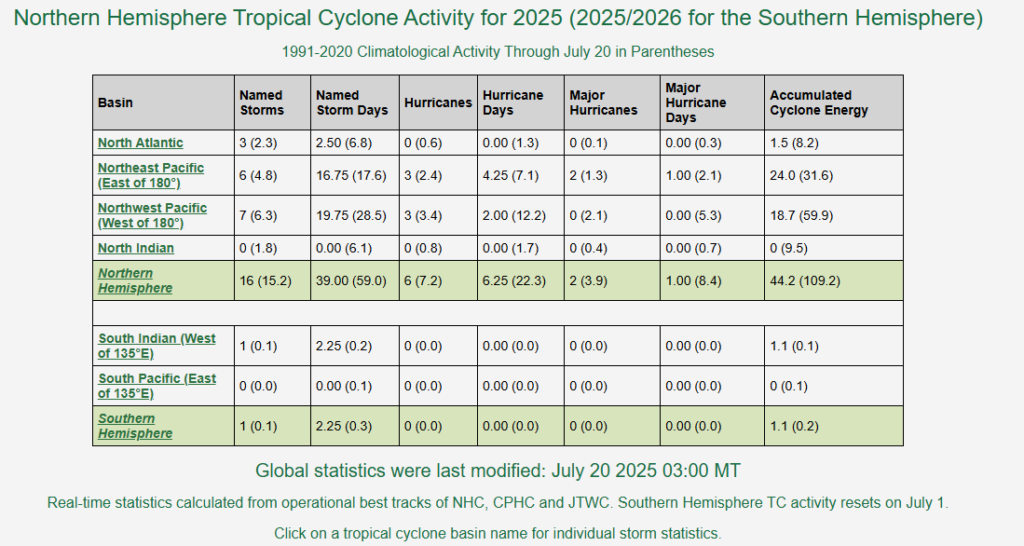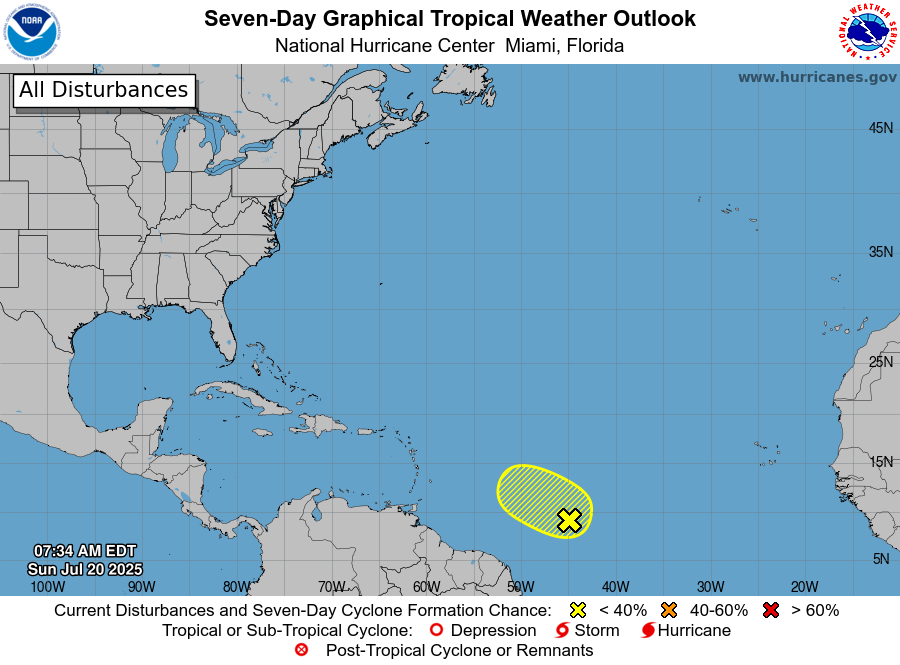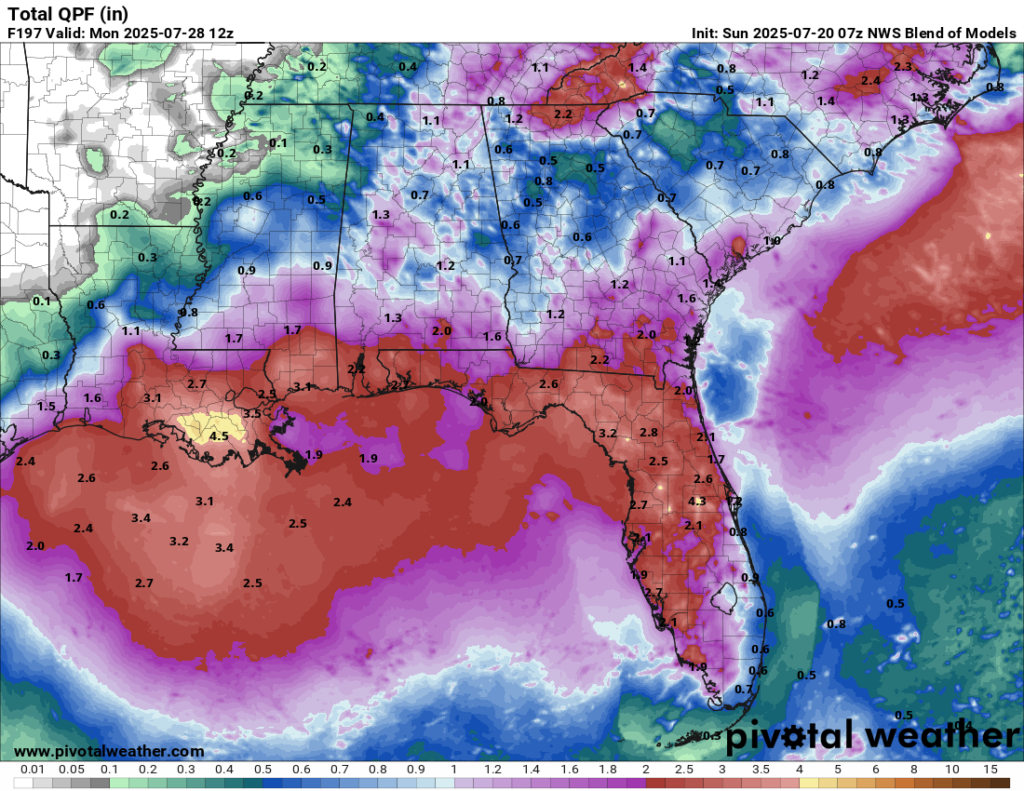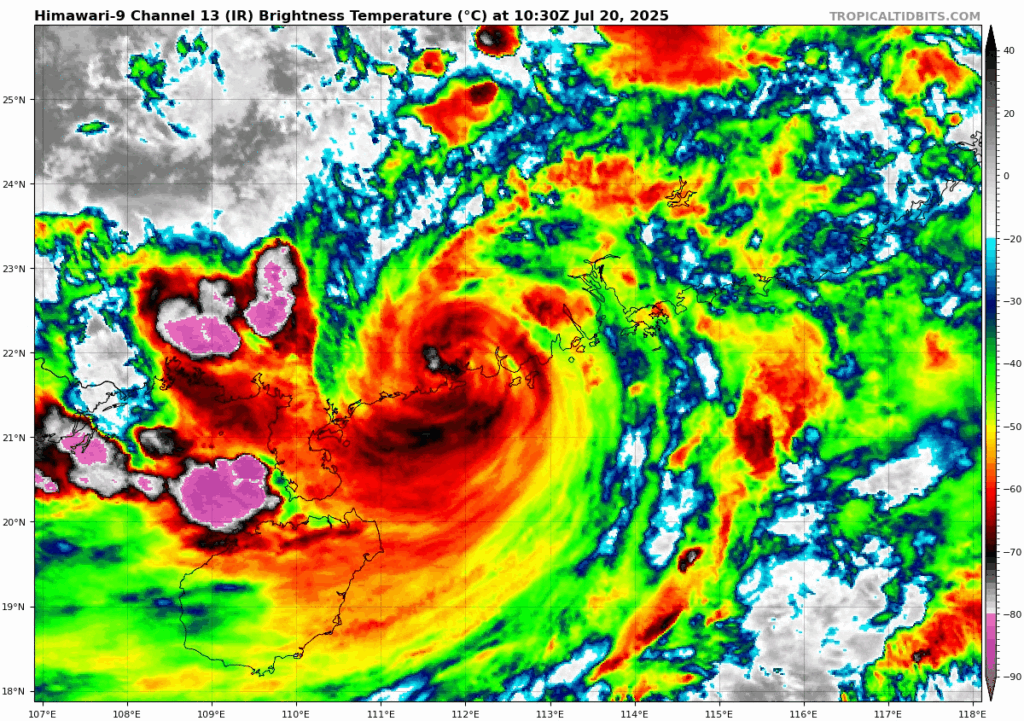By most metrics, the first 6-8 weeks of hurricane season has been fairly quiet across the Northern Hemisphere.

Going strictly by the number of named storms, activity has been near normal across the Atlantic and Pacific, and below normal in the Indian Ocean, where no storms have developed so far this season. However, the number of storms does not tell the entire story. To get a better view of how active a season has been we use a metric called Accumulated Cyclone Energy or ACE for short. ACE is calculated for all storms that are at least tropical storm strength by summing the square of a storm’s maximum sustained wind speed every 6 hours, then dividing that number by 10,000. Using this metric, activity is running about 44% of normal across the Northern Hemisphere, and less than 40% of normal across the Atlantic.
In the Atlantic, there have only been 3 short-lived tropical storms thus far this season, and 2 of them were very weak, which is why the ACE for the Atlantic is so low. In the Eastern Pacific there have been 3 hurricanes, 2 of them major hurricanes (Category 3 or stronger), resulting in a higher ACE, but it is still below normal for this point in the season. The same holds true for the Western Pacific, where there have only been 3 typhoons so far this year.

In the Atlantic, conditions have remained unfavorable for the most part, as sea surface temperatures are still a little too cool across the Main Development Region, but bursts of Saharan Dust continue to move off of Africa and across the Atlantic every few days. These bursts suppress shower and thunderstorm activity with very dry air as they make their way westward. As we get into August, the Saharan Dust outbreaks should become less numerous, and sea surface temperatures across the Atlantic should continue to rise, allowing for more favorable conditions to develop.

There are 2 areas that we are currently monitoring across the Atlantic at the moment, though both have slim odds of developing at this point. A tropical wave centered about 1000 miles east-southeast of the Lesser Antilles is producing disorganized showers and thunderstorms. There is a small window for some development over the next day or two, but after that, conditions will become more hostile once again, well before the wave reaches the eastern Caribbean.

Last week, a disturbance developed off the Southeast coast and moved westward into the Northern Gulf, producing heavy rain and flash flooding across parts of Florida and the Gulf Coast. The system did not develop before moving inland, and what’s left of it is producing showers and thunderstorms across parts of the Deep South and the Southeast. Forecast models are showing the potential for this system to move back out off the Southeast coast again in the next few days, then head westward around the periphery of a ridge of high pressure and back into the Gulf during the upcoming week, with some potential for development once again. At the very least, it will likely bring some more heavy rain to parts of the Gulf Coast, but the odds of development remain low.

In the Western Pacific, Typhoon Wipha passed just south of Hong Kong early this morning, producing wind gusts of up to 82 mph, and dropping as much as 5-10 inches of rain on the region. After making landfall just west of Hong Kong, Wipha should slowly weaken while paralleling the coast of southern Guangdong Province today. It may emerge in the Beibu Gulf (a.k.a. Gulf of Tonkin) on Monday. If it does, it could restrengthen a little before a second landfall in northern Vietnam. Whether it does or not, heavy rain and flooding are likely across parts of Southern China and northern Vietnam over the next few days.